Welcome to Fruits from Dominican Republic.
The Dominican Republic is home to a wide variety of exotic and delicious fruits. The country is offering a unique and flavorful experience for those looking for a tropical getaway. From the sweet and tart flavor of chinolas, to the juicy and refreshing carambolas, the Dominican Republic has something for everyone.

One aspect that contributes to its culinary heritage is the variety of fresh and flavourful ingredients available. Whether enjoyed on their own or as an ingredient in a dish, they offer a taste of the lush tropical climate and vibrant flavors of the Dominican Republic. So pack your bags and prepare your taste buds for an unforgettable culinary journey!
Top Fruits from the Dominican Republic
Here are some of the best exotic fruits of the Dominican Republic that you should try on your next visit.
Mangoes
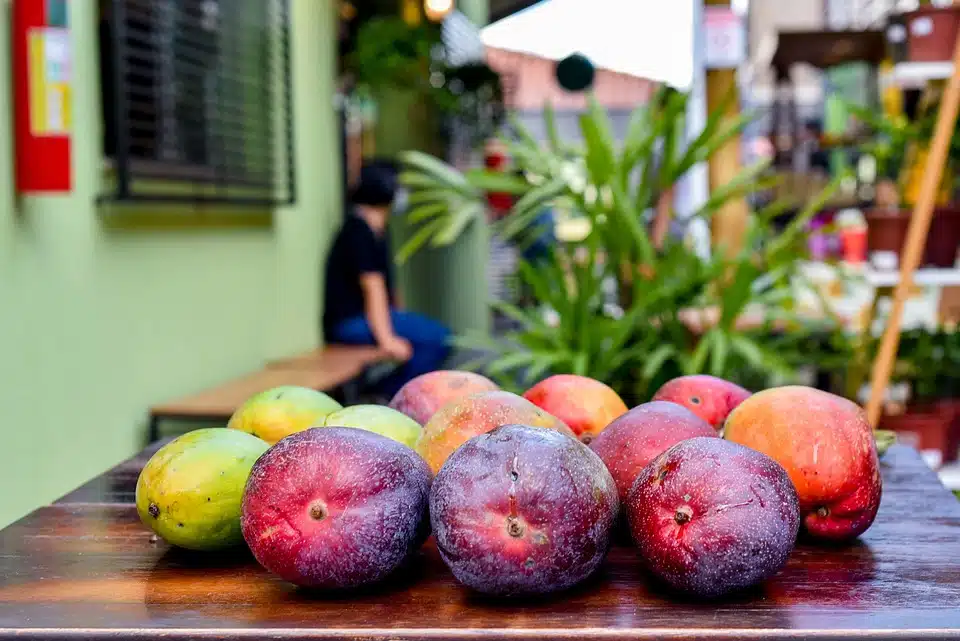
Mango is one of the most popular exotic fruits in the Dominican Republic. People know these tropical treats for their sweet and juicy flesh, and they come in a variety of sizes and colors. You can find mango trees throughout the country.
The fruit is often used in a variety of dishes, from salads to smoothies, and is a favourite with locals and tourists alike. Mangoes are a great addition to any meal or snack with their sweet and juicy flesh and distinctive yellow-orange color.
The Dominican Republic does not have a designated national fruit. Unlike its official national tree (mahogany/caoba), bird (palm chat/cigua palmera) and flower (Bayahibe rose/rosa de Bayahibe). However, the mango is widely considered to be the unofficial national fruit due to its abundance in the country, its taste and its popularity.
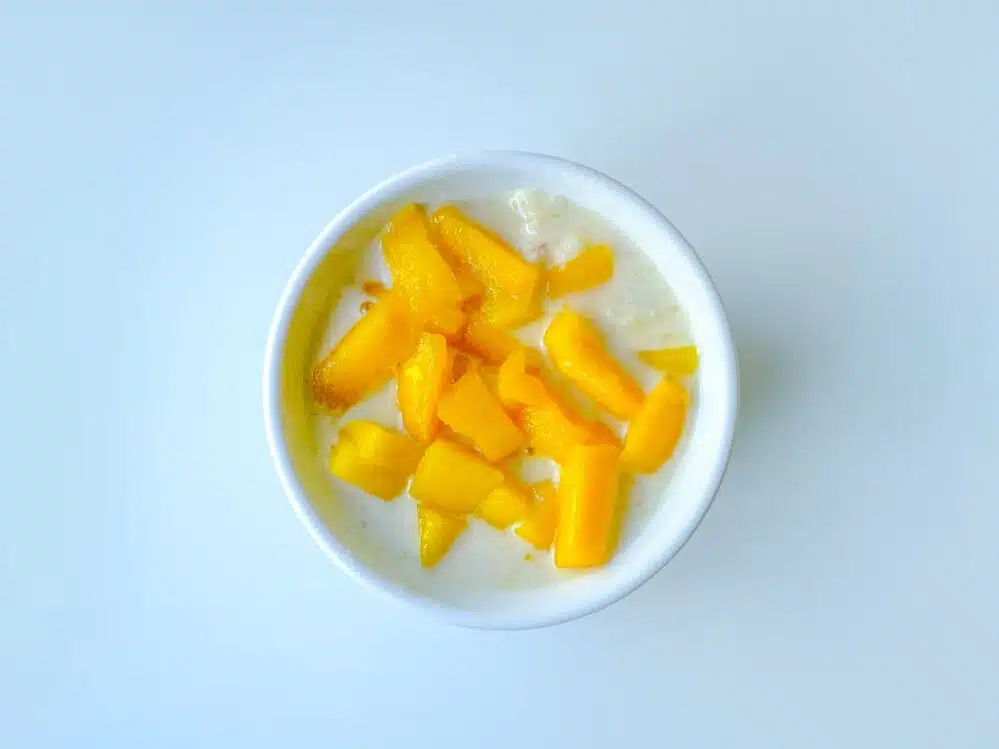
This fruit comes in a variety of varieties, such as grano de oro and banilejo. In addition to the mango, the Dominican Republic has many other fruits, both well-known and lesser known.
Sarte Guava Fruit
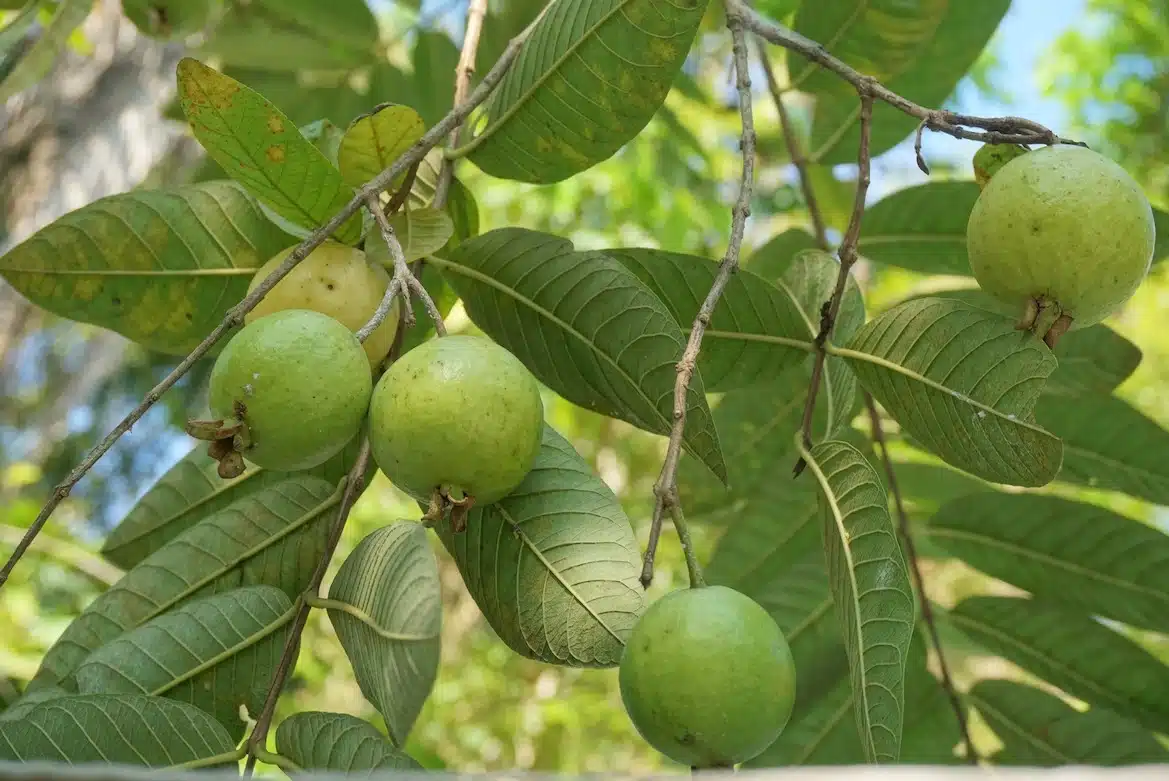
Myrciaria floribunda, or guava fruit (Sartre guava), is a small and tart fruit that is commonly made into a popular drink. It is similar to cranberries in diameter, shape, and texture, with a sweet and slightly sour flavor. Sartre guava fruits are round, small, and measure 1 and 2 ½ cm in diameter. When immature, the exterior skin is bright green; when ripe, it turns yellow. Each berry contains 1 to 5 small, yellow oval-shaped seeds. The texture and flavour are like that of guava – juicy, tart and slightly sweet.
Myrciaria floribunda is a rare fruit popular for its use in the production of the eponymous Guavaberry drink. Its appearance is similar to that of cranberries and it has a mild sweet flavor.
Although San Pedro is the city that is most closely associated with guavaberry, most of the crop is actually grown in El Seybo and harvested in November. Guavaberry drinks are usually available by December and are an integral part of Petromacorisanos’ Christmas celebration.
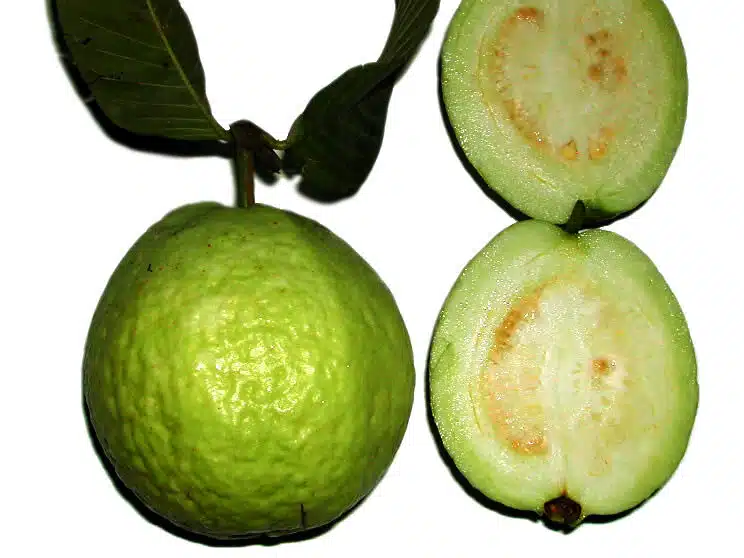
The fruit is a great source of vitamin C, ash, crude fiber, tannins and phytic acid. While people consider phytic acid an anti-nutrient, studies have shown that extracts from Guava fruit can help prevent certain infectious diseases and cancers. The leaves provide a therapeutic effect on gastrointestinal distress, and people use the pureed fruit to treat skin injuries.
Guava fruit can be consumed fresh, dried, or made into a jam. It can be added to salads, cooked down to make syrups and preserves, juiced to make agua fresca. Furthmore, it is also used to make sweets, popsicles and other flavoured drinks. To maintain freshness, store the fruit in a cool, dry place and use it within a week of harvesting.
Aguacate (Avocados)
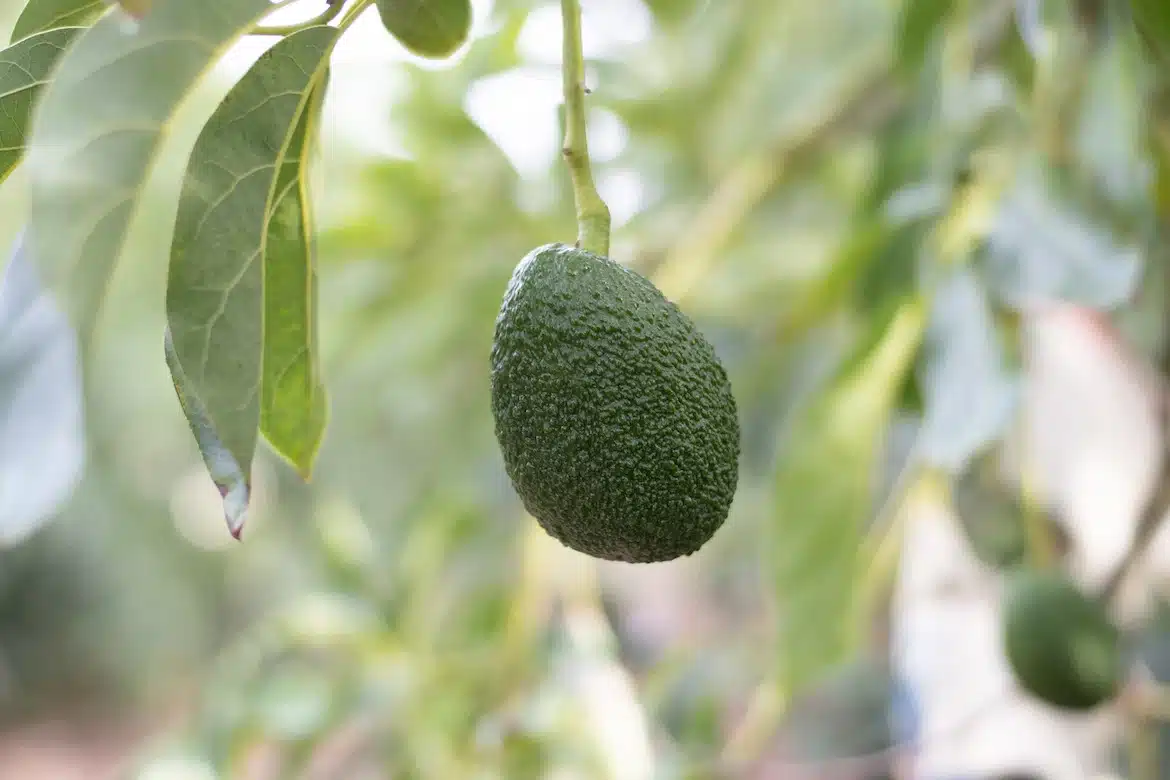
Persea americana, or avocado, is another popular fruit in the Dominican Republic. Commonly eaten as a vegetable, avocados are a great source of fiber and vitamins. They can be enjoyed mashed on toast, in salads, or as a side dish. Avo, Avocado, avocado pear, or alligator pear, is a widely popular fruit-vegetable across the globe.
Spanish-speaking countries, such as the Dominican Republic, call it aguacate, except in the Andean region, where people refer to it as palta. These names originate from the ancient Nahuatl and Quechua languages. In many countries, people often serve it as a side dish or mash it onto bread for a snack.
Sweetsop

Annona squamosa or sweetsop, is a unique fruit with a white, edible pulp and many black seeds. Annona squamosa, the most commonly cultivated species of Annona, is native to humid tropical climates in the Americas and West Indies.
The fruit has a thick rind made up of distinct nodes. The color varies from pale green to blue-green, with a deep pink blush in certain varieties. Additionally, a bloom coats its surface. The unique feature of this fruit is that it can be segmented. The segments become loose when it ripens, revealing its interior.
It is rich in antioxidants and vitamins, and can be made into a juice, candied, or made into a jam. It is a good source of iron and vitamin C and can be used to make juice, similar to the beverage made from guanábana.
Almendra (Indian Almonds)
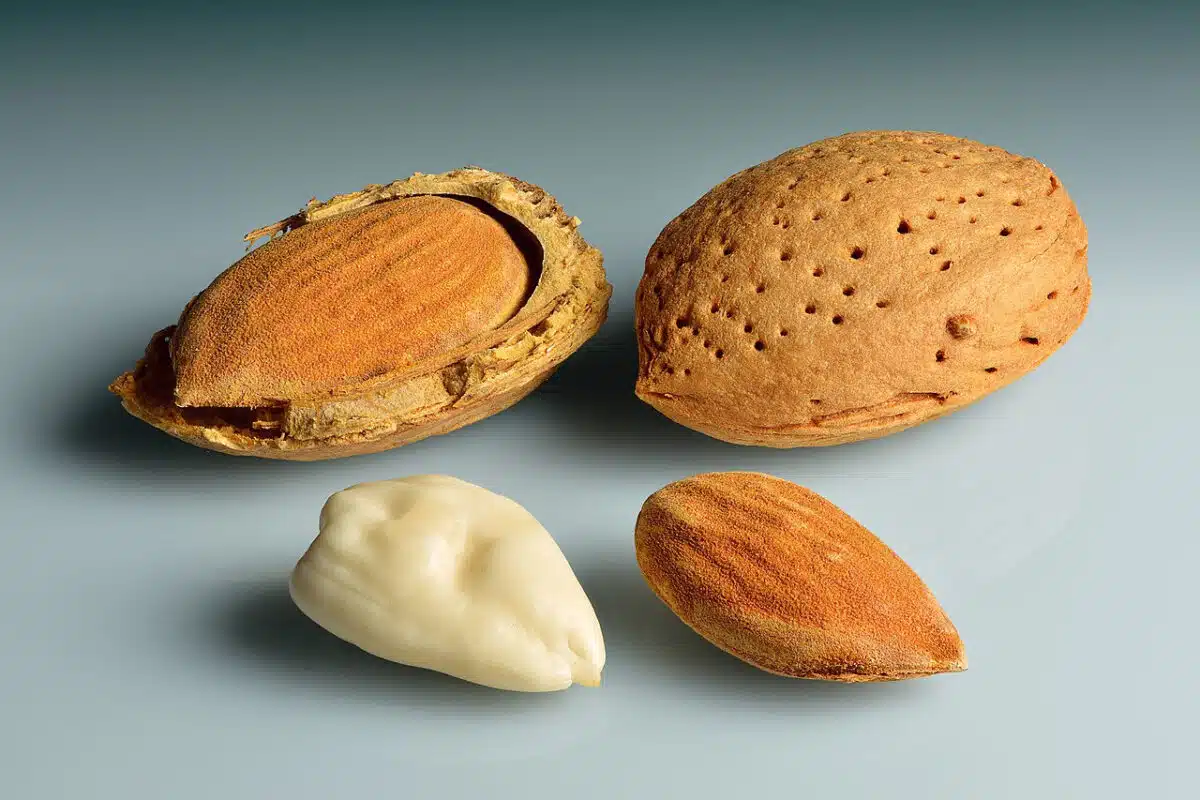
Terminalia catappa or Indian almonds, are an uncommon fruit with an almond-like nut that is native to the Dominican Republic.
The fruit of this tree has a sweet flesh with a thin skin as well as a pit inside. When the pit is dried and cracked, it reveals an almond-shaped nut. Both the fruit and the nut are edible.
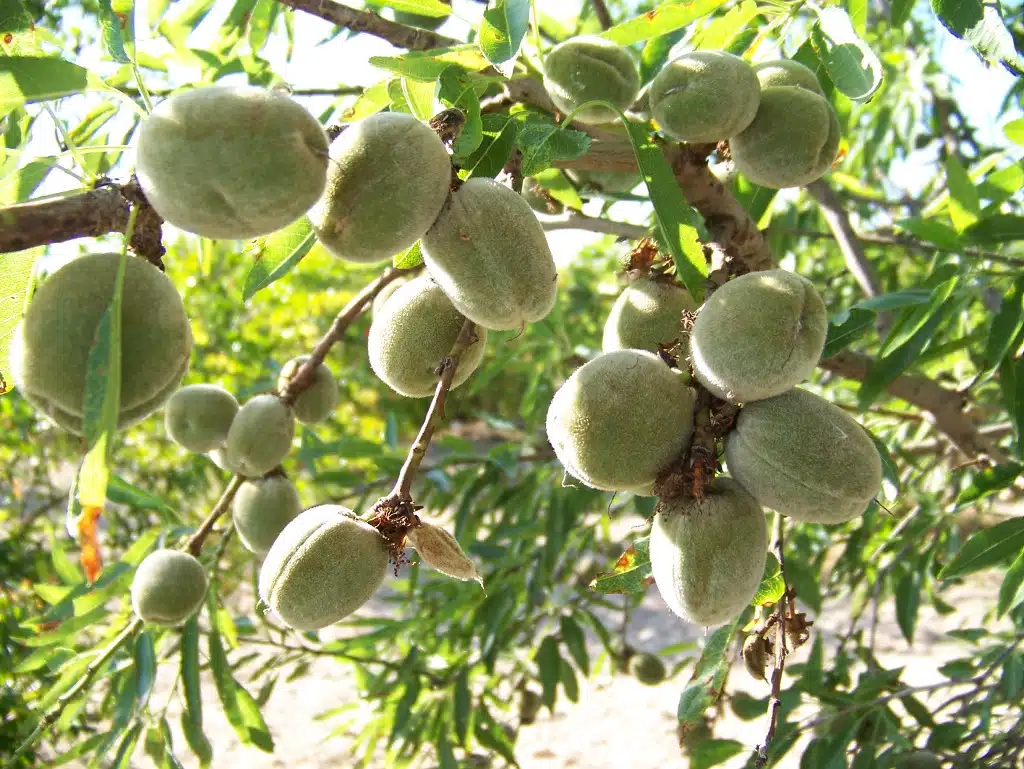
Terminalia catappa, commonly known as “almendra” in Dominican. It is a species of tree, not to be mistaken with almonds, which is referred to as almendras/almendros in standard Spanish. In English, they are more commonly known as Indian almonds, sea almond or tropical almonds.
In addition, the tree is also known by other Spanish-speaking countries as “Almendro de playa, Almendro malabar, Zapoteco, Almendro de los trópicos, Almendrón y Falso kamani“.
Cacao
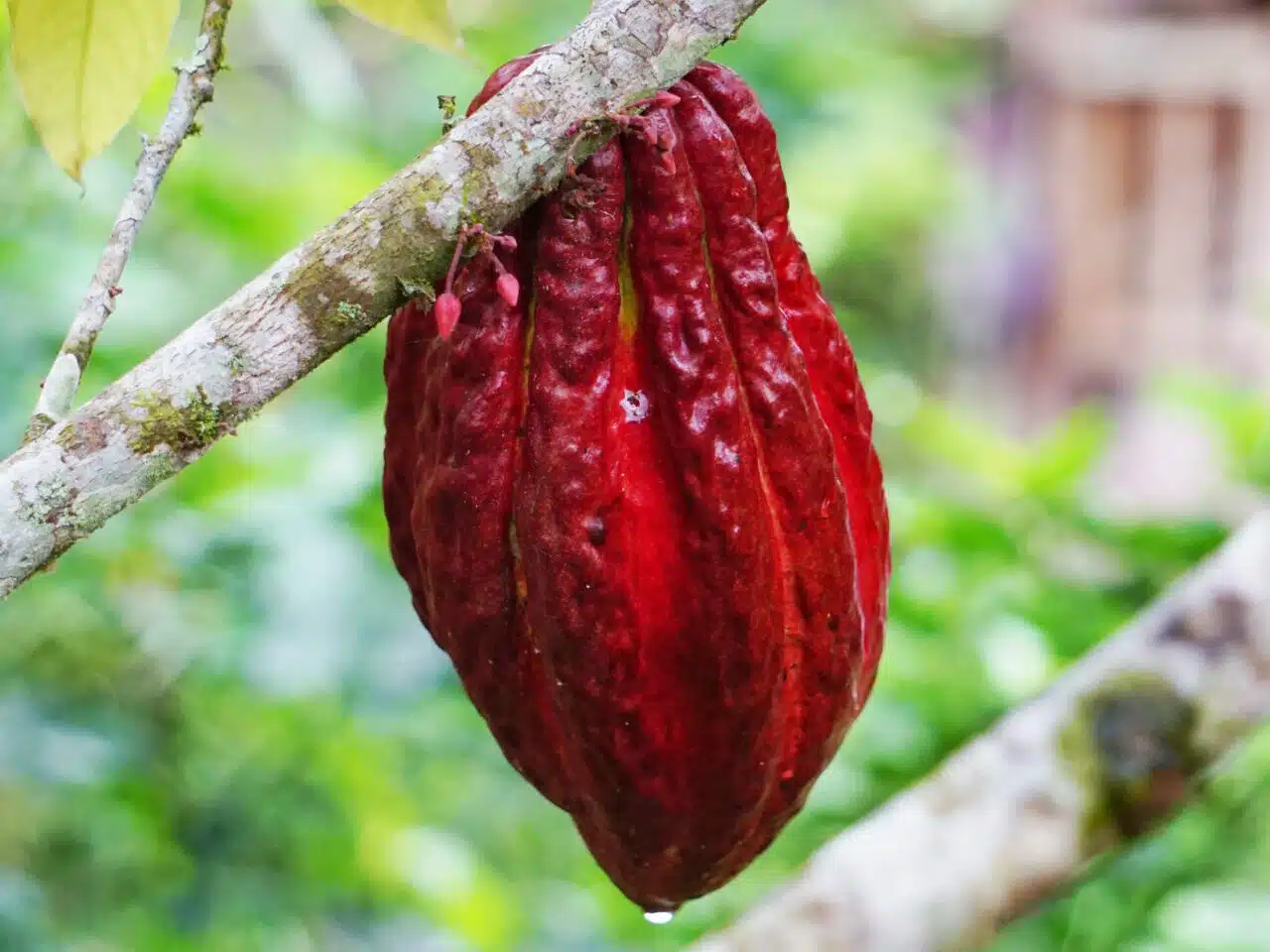
Another unique fruit of the Dominican Republic is Theobroma cacao or cocoa pod. It is used as the base for dairy-free cocoa and chocolate con leche, and is rich in antioxidants and vitamins.
Theobroma cacao, commonly known as cacao or cocoa bean/pod, is a tropical fruit that has been used for centuries to make chocolate and cocoa powder. As well as being edible in its natural form, the fruit has a sweet and tart fruity flavour. In many parts of the world, it is used as the base for chocolate de agua (milk cocoa) and chocolate con leche (milk cocoa).
Every type of chocolate product we know and love today is derived from this original fruit. Chocolate and cocoa have a unique ability to evoke strong emotions in many people. It’s not uncommon to find that in times of distress, the only thing that helps is chocolate. Some have even gone as far as to describe their relationship with chocolate as an addiction, combined with psychological attachment and religious ecstasy.
Cashew Apple (Fruit)
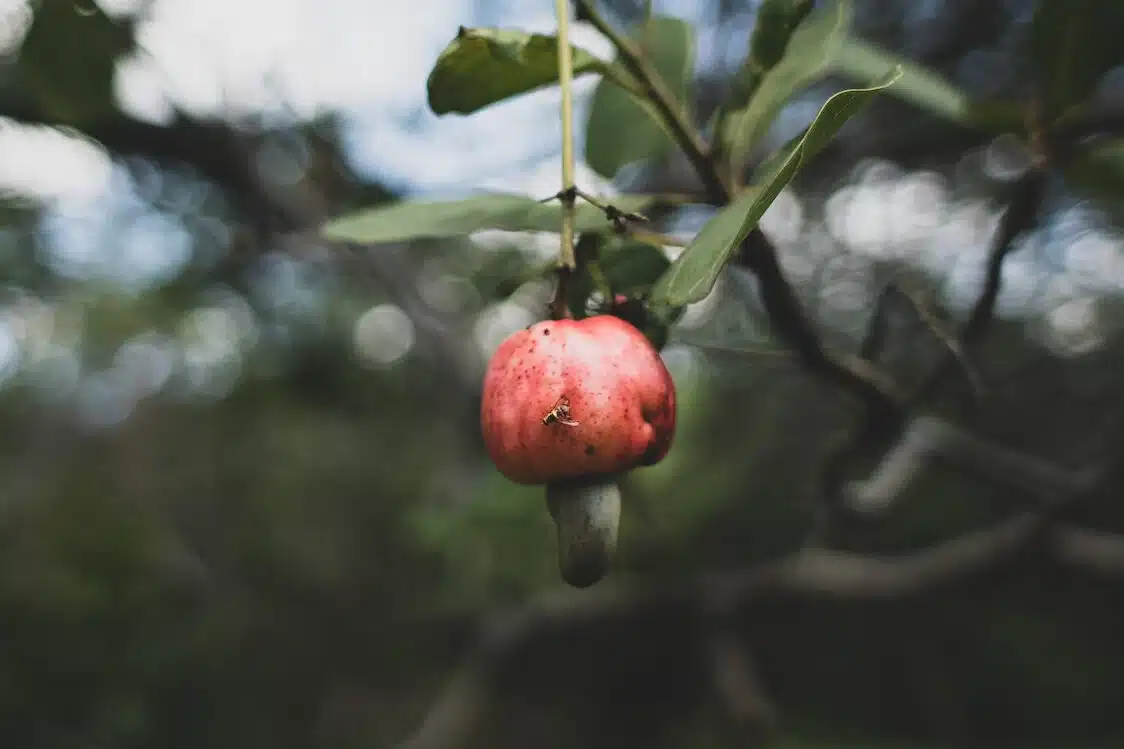
Anacardium occidentale, Cajuil or cashew apple, is a popular fruit in the Dominican Republic. It has a thin skin and a mushy sweet flesh, and is commonly made into jams and roasted cashew nuts. Cashew apples are available year-round in tropical regions and are classified botanically as Anacardium occidentale.
Cashew apples are frequently overlooked in cultivation in favor of the seed and are often harvested and discarded for livestock feed. However, some regions process the fruit into juice, liquors, and preserves for sale in local markets.
Characteristics of Cashew Apples
| Feature | Description |
| Size | Small to medium-sized fruits, typically measuring 5 to 11 centimeters in length |
| Shape | Bulbous, oval, conical, or blocky, pyriform shape |
| Skin | Thin, smooth, taut, and waxy, displays golden yellow, red, or a combination of both colors when mature |
| Texture | Dense, aqueous, fleshy, spongy, and soft, with many chewy, stringy fibers |
| Aroma | Mixture of sweet, fruity, and pungent notes |
| Flavor | Combination of bell peppers, mangoes, cucumbers, and strawberries with a sweet nuttiness followed by astringency |
| Shell | Hard double-hulled shell that contains the kidney-shaped cashew seed |
| Resin | Red-brown, oily resin contained in honeycomb-like cells between two shells, viscous and toxic |
| Availability | Year-round in tropical regions |
| Botanical Classification | Anacardium occidentale |
| Tree height | 6 to 14 meters depending on the rootstock |
| Fruit Development | Seed develops before the fruit, takes 2.5 to 3 months |
| Fruit Type | Not a true fruit as it does not contain the plant’s seeds |
| Local Names | Marañón (Central America), Anacardier/Acajou (France), Jambu Monyet/Jambu Monet (Indonesia and Malaysia), Merey (Venezuela), Caju/Pomme de Cajou/Cajueiro (Portugal), Maranon/Cajuil (Puerto Rico), Mamuang/Himmaphan (Thailand) |
| Uses | Harvested and discarded for livestock feed, processed into juice, liquors, and preserves for sale in local markets in some regions |
Caña
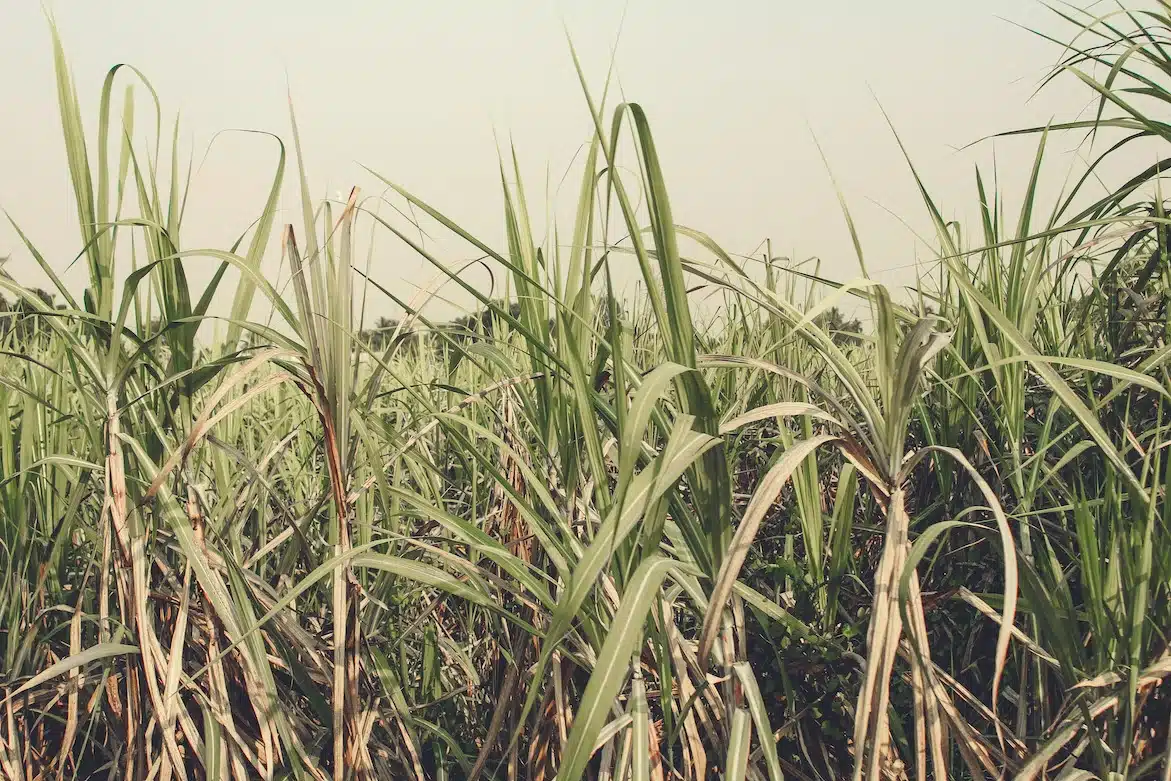
Sugarcane, or sugar cane, is a type of grass that is sold as a snack on fruit stands. It is also made into a fresh juice, and is a great source of fiber and vitamins.
Sugarcane, botanically known as Saccharum officinarum, is a type of grass that has been a major export product in the Dominican Republic for many years. It is not technically a fruit. However, it is often sold in small peeled and sliced sticks as a snack at many fruit stands. Additionally, street vendors can be seen selling Guarapo de caña, which is the fresh juice extracted from sugarcane.
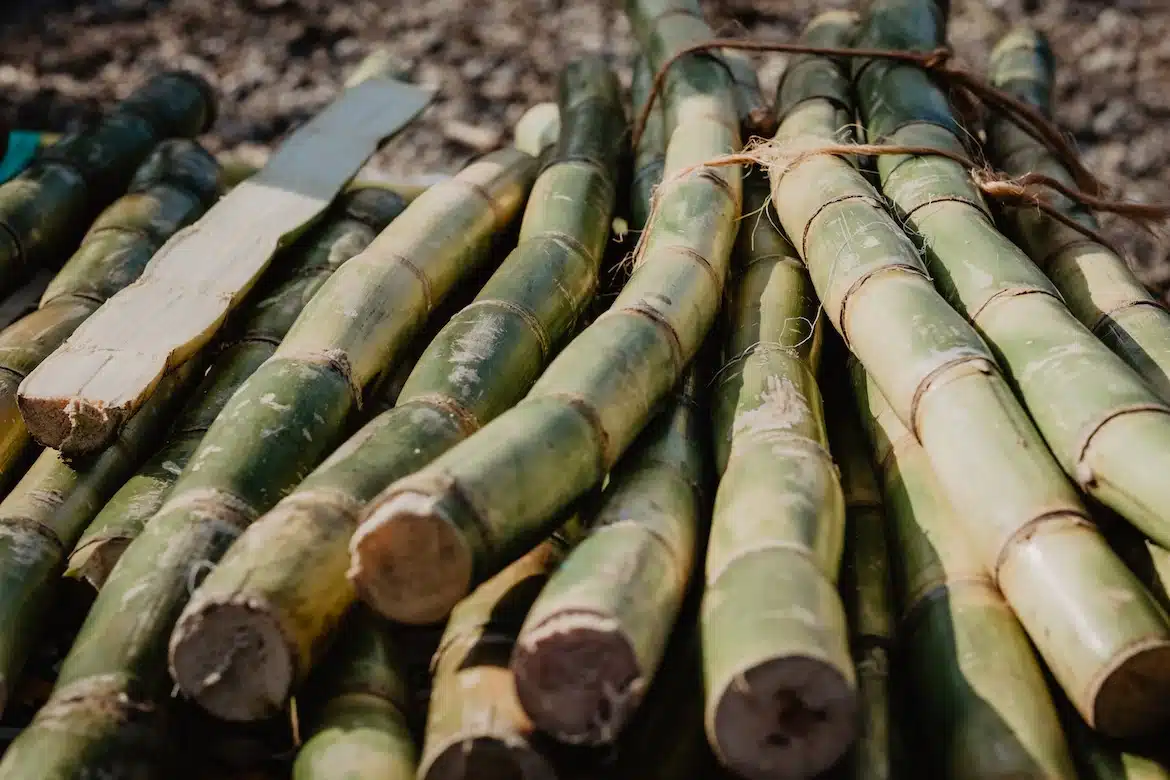
Sugarcane juice is a popular summertime beverage for its refreshing taste and its various nutritional benefits. It comes packed with carbohydrates, protein, vitamins (A, B-complex and C), and minerals such as phosphorus, calcium, potassium, zinc, and iron.
You can cultivate this grass easily, and it’s often available at quite affordable prices. Though native to Papua New Guinea, now more than half the world, including Asia and the Americas, produces sugarcane. You can enjoy sugarcane as a snack or in the form of juice, which you can flavor with mint, ginger, and black rock salt.
Breadfruit
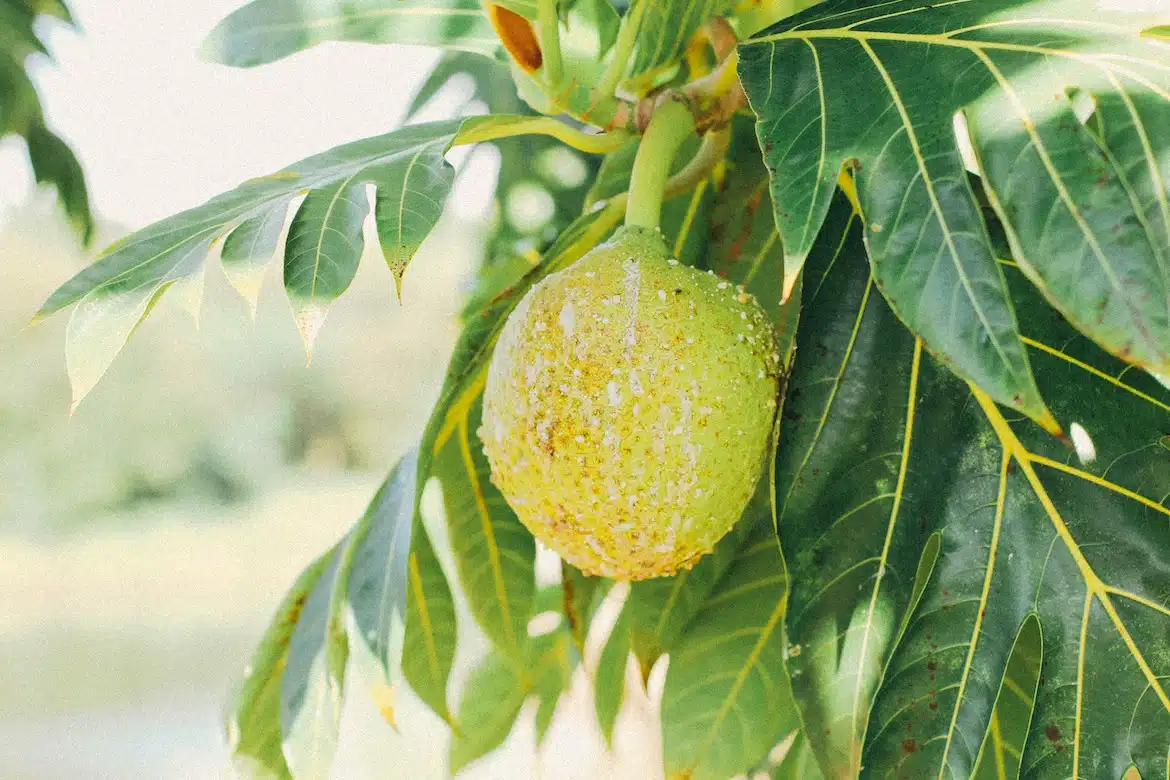
The Breadfruit is a tropical fruit native to New Guinea, which Europeans introduced to the Caribbean to feed slaves. Despite its large yield – up to 150 fruits per year, and a weight of each fruit ranging from 800 g to 2 kg.
This fruit is often seen as low-grade food and mostly used as livestock feed.
However, this could change in the near future, as Breadfruit is relatively easy to cultivate and is a very nutritious food. In terms of taste, it is somewhat similar to potatoes and 100 g of Breadfruit contains 25% of the recommended daily allowance of fiber and 5–10% of the RDA for protein, magnesium, potassium, phosphorus, thiamine (B1) and niacin (B3).
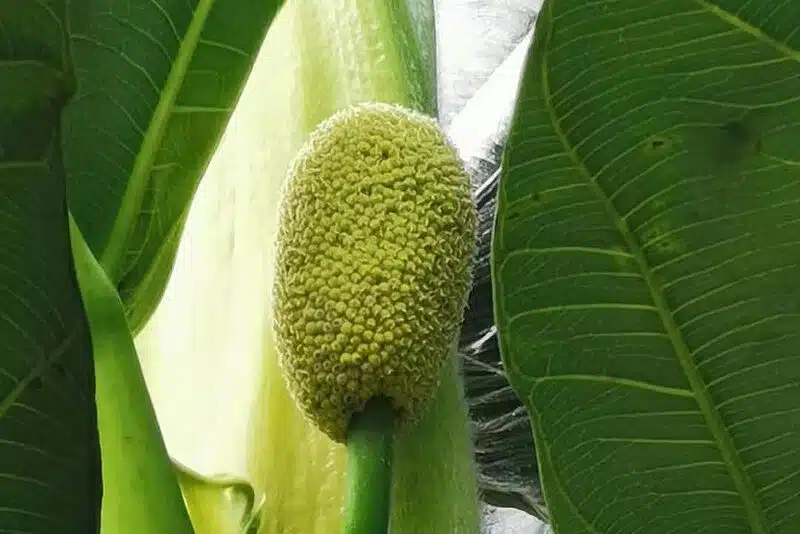
It is also rich in Vitamin C and A, as well as iron, magnesium and potassium. In addition, it is a low glycemic food, making it an ideal substitute for rice and potatoes. In the Dominican Republic, people like to fry pieces of Breadfruit in oil, which is called “tostones” or “mofondo”. However, almost any fruit is fried in oil here, and all these dishes are called “tostones”.
In general, Breadfruit is usually peeled and then fried or boiled. It is believed that Breadfruit will become an integral part of our diet and could be the “taste of the future“.
Caimito
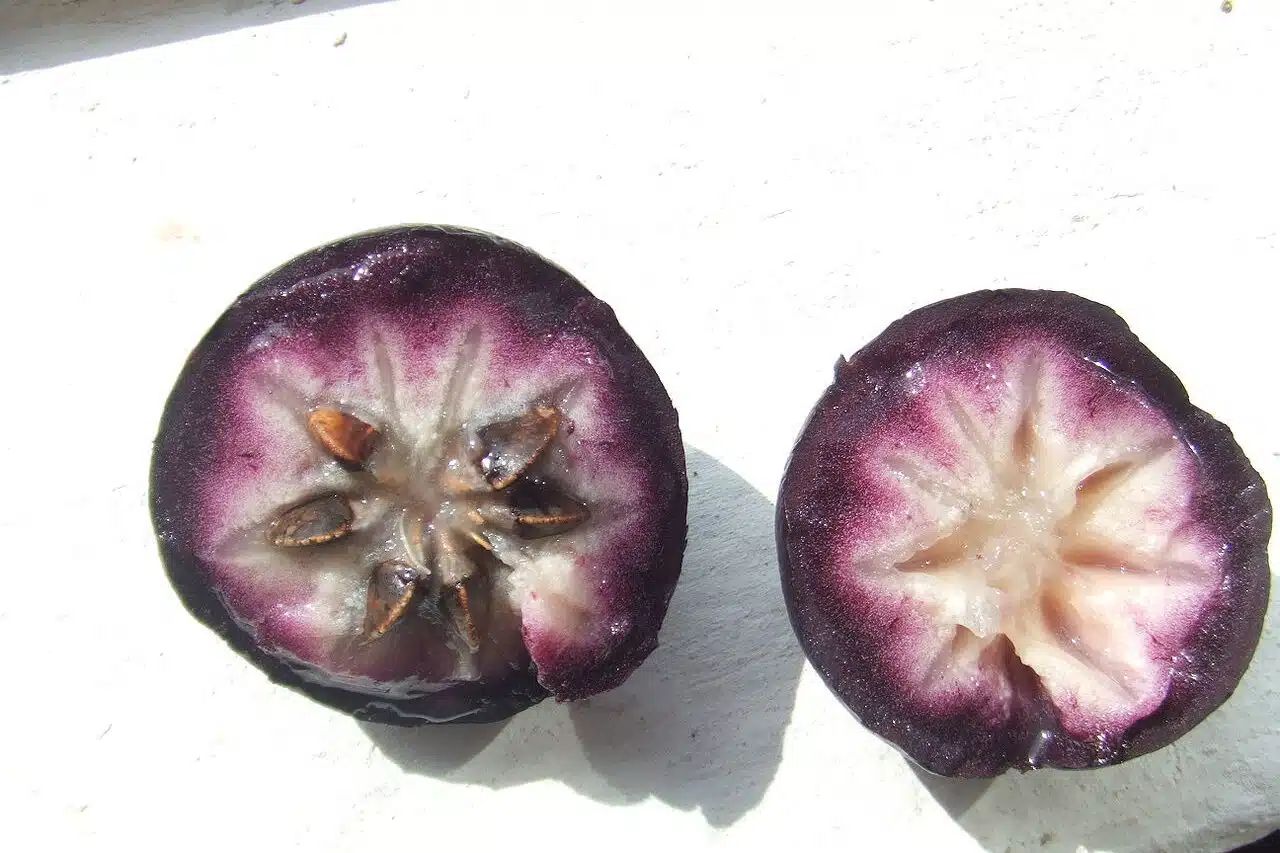
Caimito is a plum-shaped fruit with an inedible skin and sweet purple-white flesh. When cut in two, it reveals a star from the seeds. It is filled with essential vitamins and minerals such as vitamin C, calcium and potassium.
This fruit is known to be one of the most delicious fruits in the world, often compared to a very ripe persimmon but with a tangy aftertaste. Its texture is smooth and glossy with a leathery exterior. Depending on the color, the inner rind may be purple or white. The pulp is white, soft and milky, surrounding 6 to 11 seeds that are found in rubbery seed cells. Each seed is then surrounded by a gelatinous pulp.
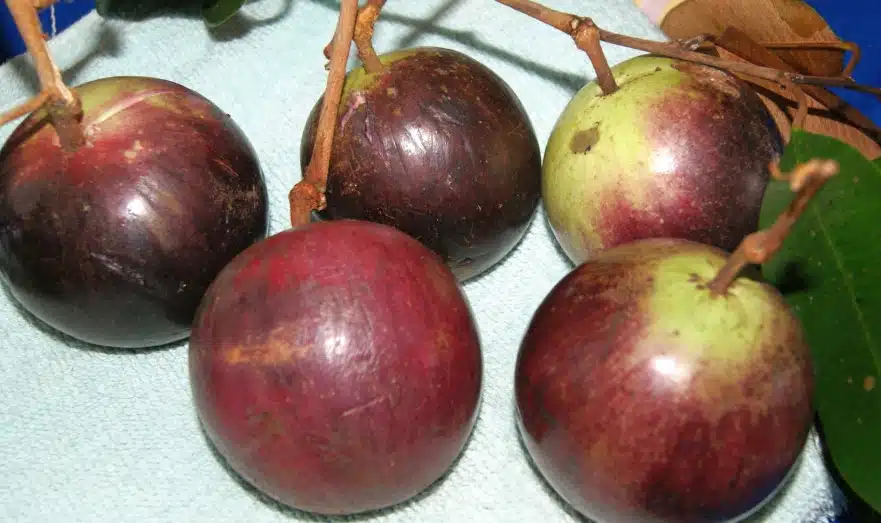
Caimito is beneficial to health because its high fiber content helps regulate blood sugar. It is also rich in antioxidants that protect against oxidative damage and diabetes.
African star apple is known to reduce the levels of enzymes such as alpha-amylase and alpha-glucosidase which break down carbohydrates and cause blood sugar levels to rise.
Star Fruit
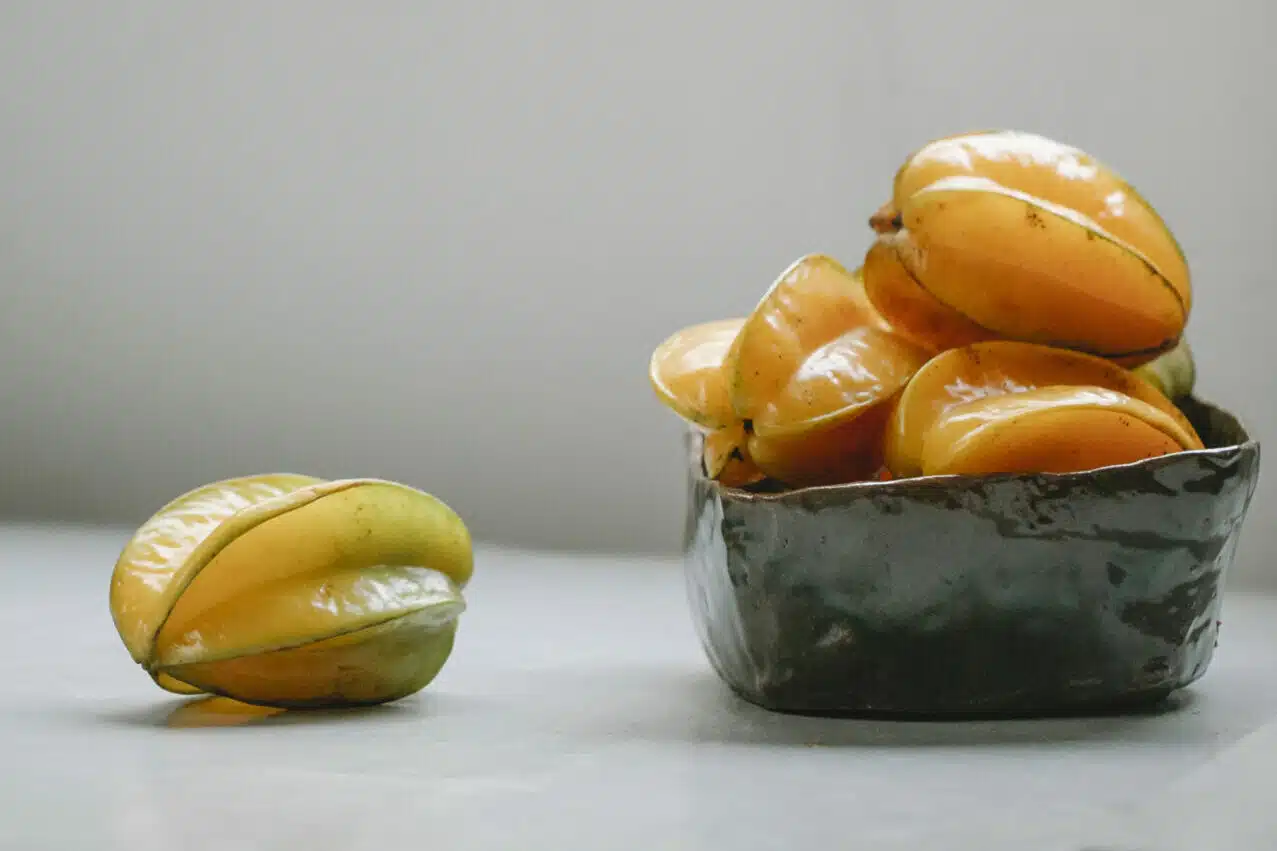
Carambola, more commonly referred to as star fruit in English. It’s a bright yellow, star-shaped fruit originating from India and Southeast Asia. Very popular in the warmer, wetter climates of these regions. It is now found in South America and Australia. Furthermore also in some parts of the United States and for sure in the Dominican Republic.
When cut, carambola takes on the shape of a star, thus giving it its name. Carambola has a sweet yet tart taste, similar to that of pears, but with a unique texture. It is usually eaten raw, used to make desserts and drinks, added to salads, or used as a garnish.
Dominican Cherry
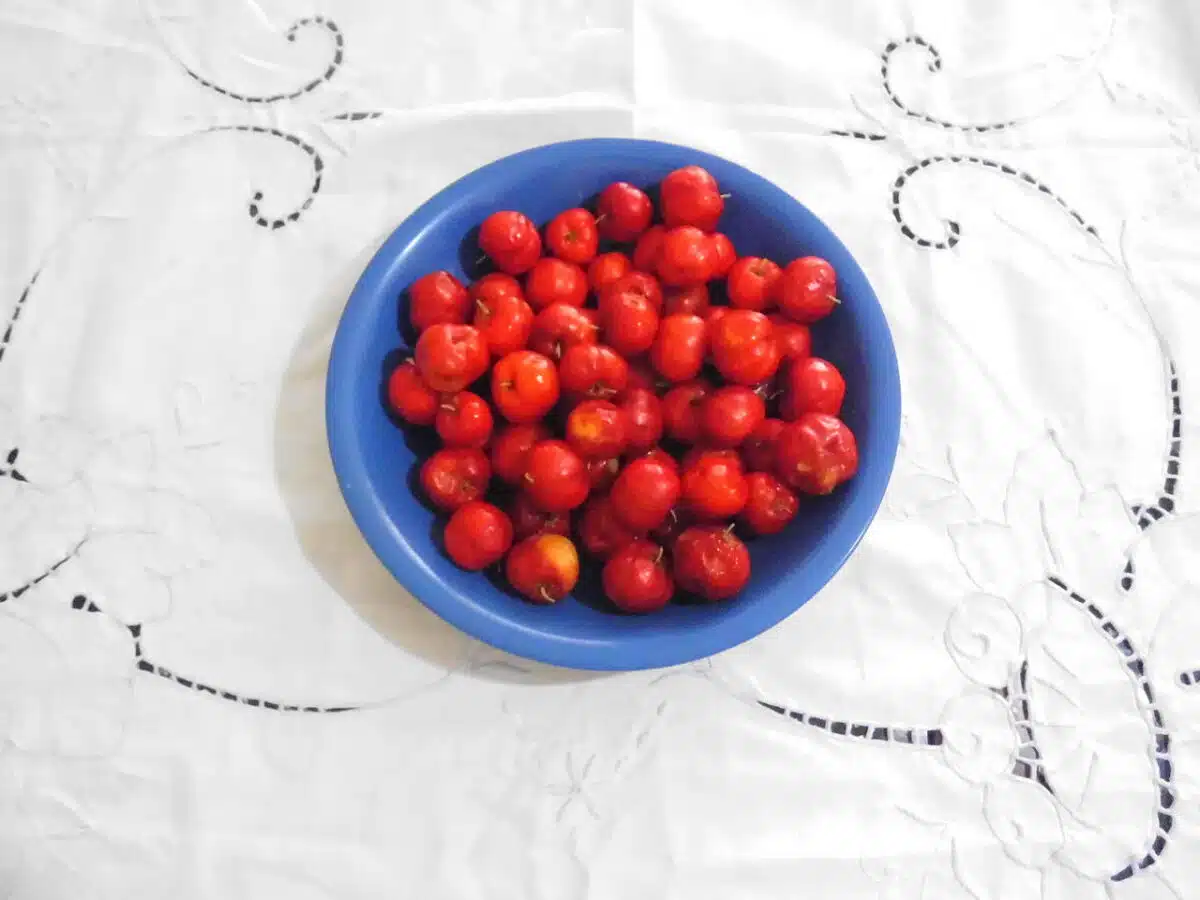
Malpighia emarginata, commonly referred to as the Dominican cherry, Acerola cherry, Barbados cherry, or West Indian cherry, is an exceptionally nutrient-rich fruit. It is widely used in the Caribbean to make juices, drinks and jams, and is renowned for its high vitamin C content. The taste of the Dominican cherry is similar to that of other cherries, but with a slightly more acidic flavor.
People commonly freeze or can sour cherries (Prunus cerasus) and use them to make sauces and pastries. They mostly eat sweet cherries (P. avium) fresh and commonly use them to make maraschino liqueur.
People often favor cherry plants for ornamental landscaping because of their abundant spring blooms. They often use the dark red wood from some cherry species to create exquisite furniture.
Passionfruit
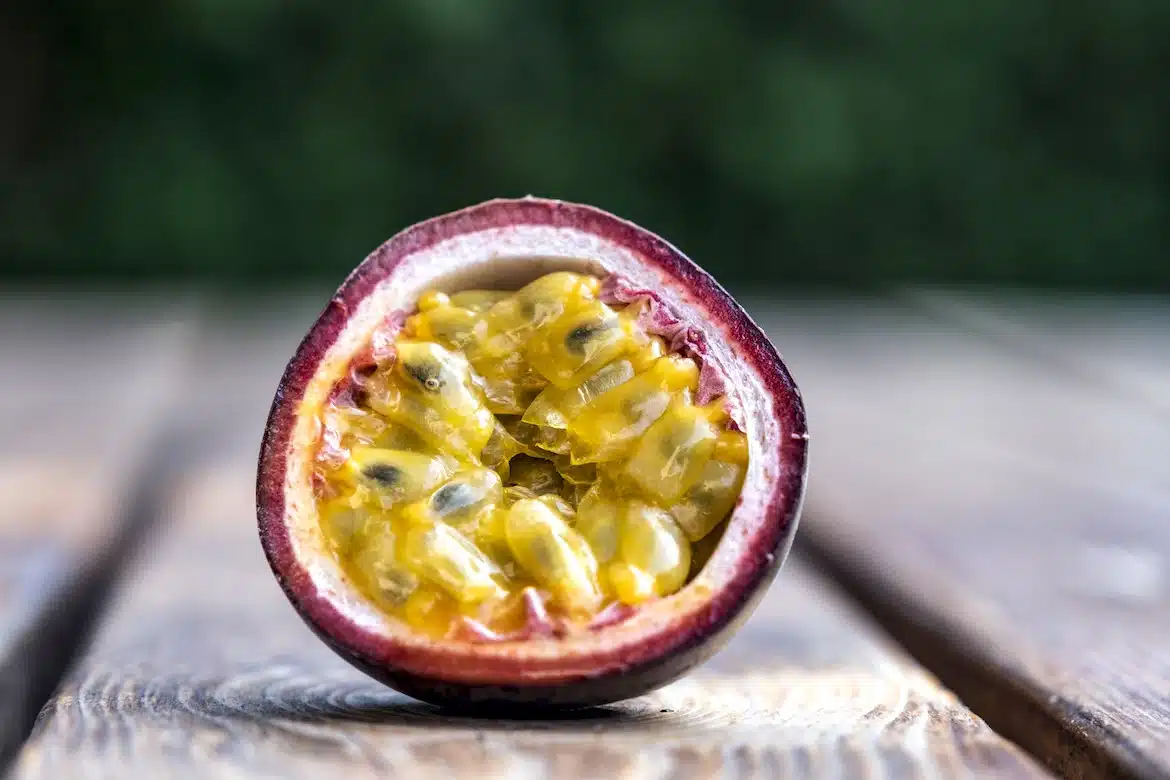
Passiflora edulis is another Fruits from Dominican Republic. It is commonly known as passion fruit and is a popular fruit found in many parts of the world. It is also referred to as fruit of passion, chinola in the Dominican Republic, parcha, parchita, maracuyá, calala and fruta de la pasión in other Spanish speaking countries.
Passion fruit is widely used to make delicious juices and smoothies due to its citrusy flavor. Originating from Brazil, Paraguay and Argentina, this fruit was introduced to Australia in 1880 and then to Hawaii.
Brazil is the main producer of passion fruit and is responsible for growing, juicing and processing. Australia is the second biggest producer. Other countries such as Kenya, Uganda, South Africa, India, Israel and other warm climates are also involved in growing this fruit. The vine that produces passion fruit only bears fruit for seven years. It is the wrinkled skin that usually indicates the sweeter flavour.
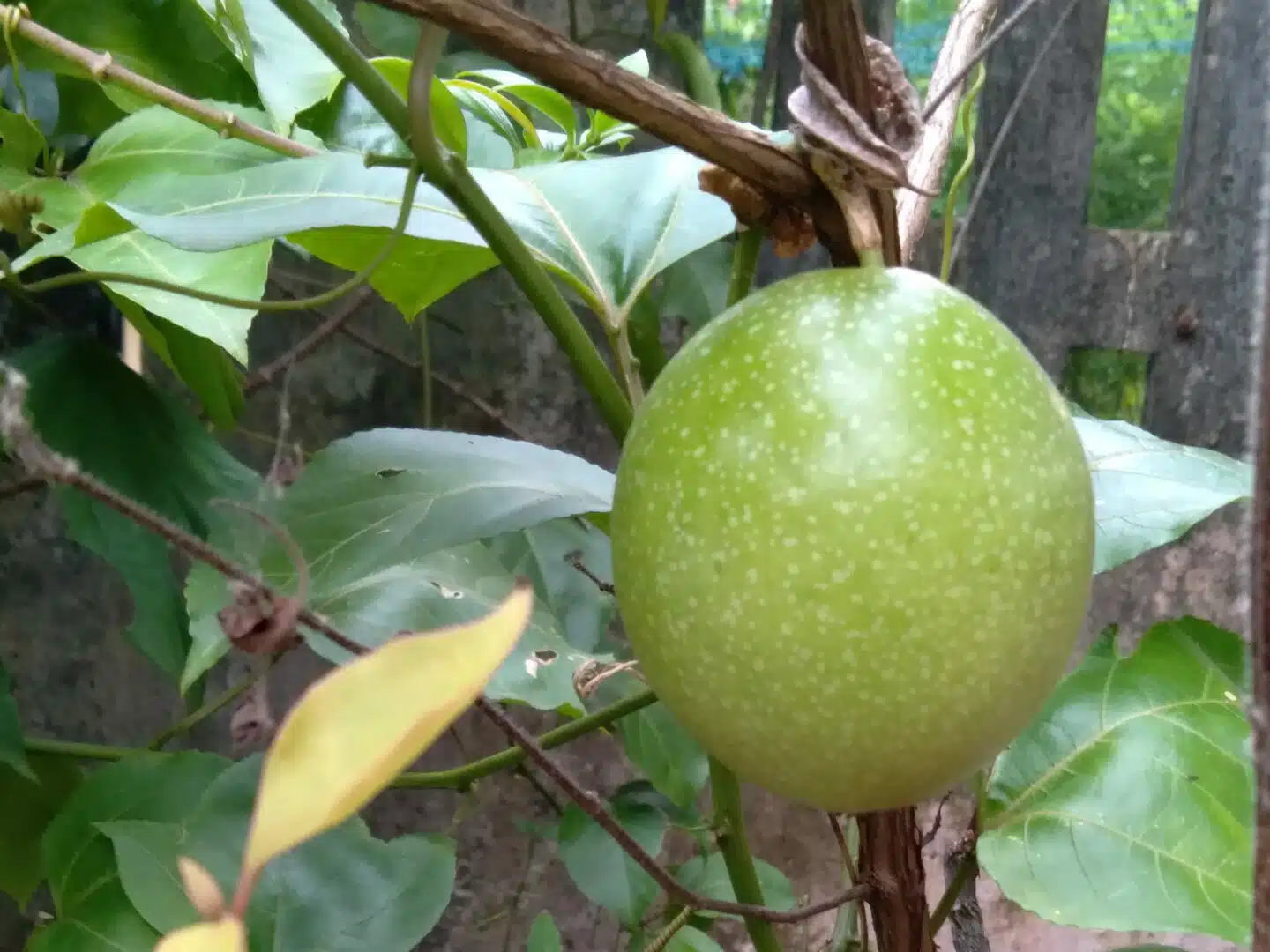
The orange flesh is filled with small dark seeds. Four main varieties of passion fruit include purple, yellow, Panama and Banana. The purple variety is smaller, juicier and has a less acidic taste with a purple, hard, dimpled skin and yellow-orange pulp.
The yellow variety is the most widely available and is larger with dimpled yellow skin, pale orange or yellow pulp and brown seeds. The Panama variety has smooth, hard purple or pink skin, is sweet and has yellow-orange pulp and black seeds.
Like a sweet potato, the Banana variety is elongated, with soft, smooth skin, yellow-orange pulp and black seeds.
Granadillo
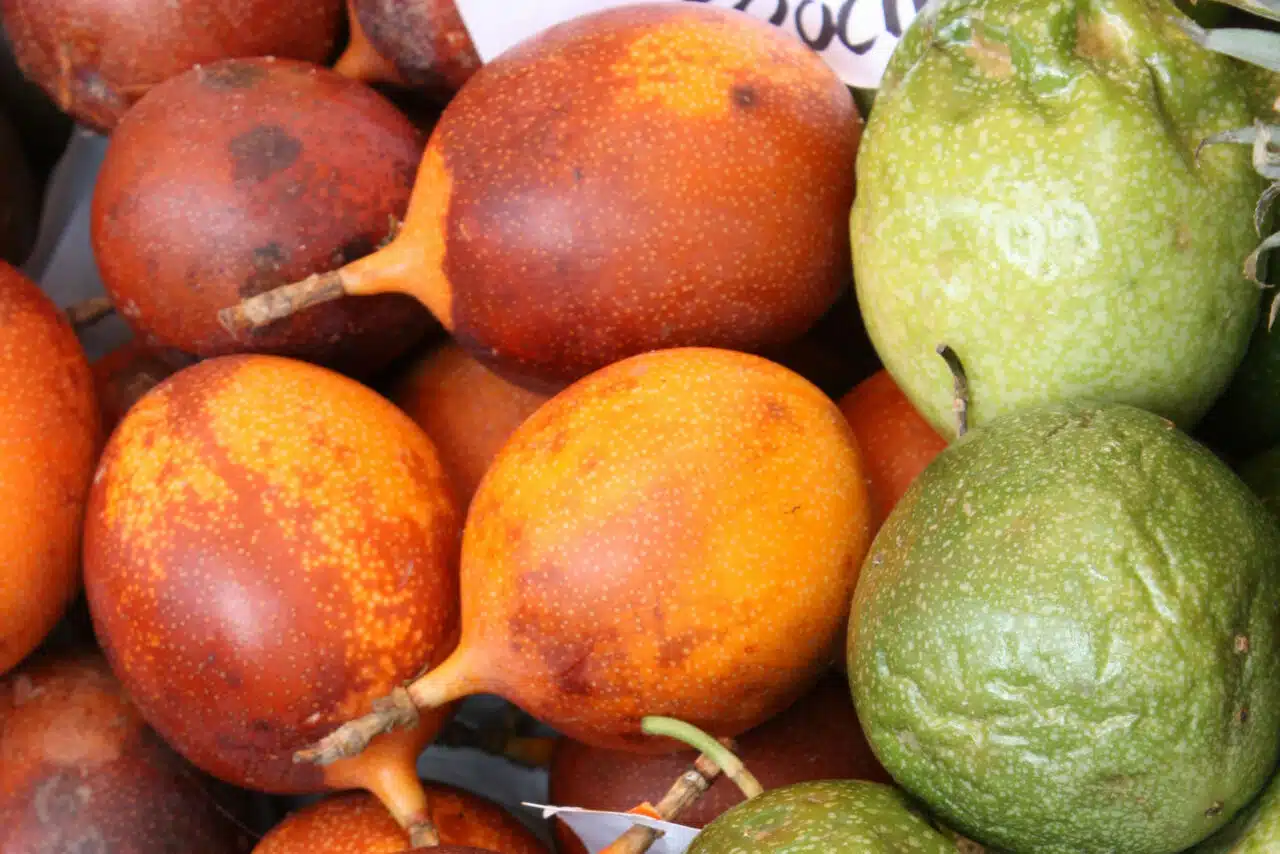
Passiflora quadrangularis, commonly referred to as giant granadilla or granadilla, is a relative of the passion fruit with a slightly sour taste that is much more gentle than the latter. It is large in size and has a pear-like texture, a pleasant aroma, and a mild sweetness. This fruit is widely used to make shakes in the Dominican Republic.
Granadillo is a great source of antioxidants containing a decent amount of phosphorus and a minor amount of calcium. Batida de granadillo is a popular beverage which consists of granadillo as its main ingredient. Granadillas are small to medium-sized fruits, measuring around 6 to 8 cm in length and 3 to 5 cm in diameter.
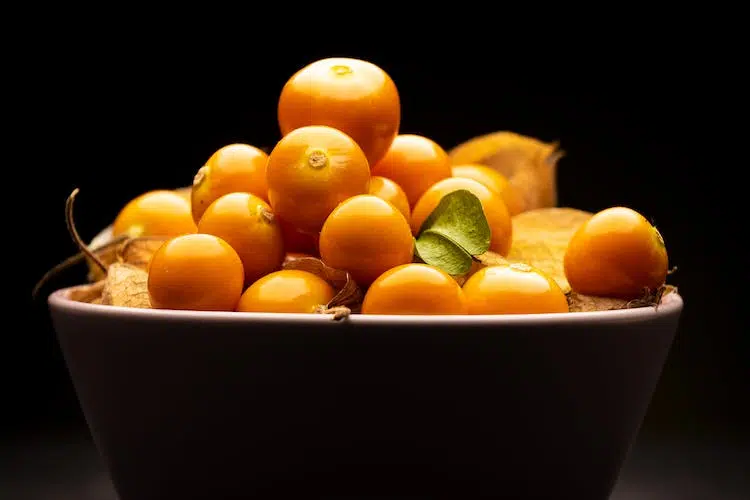
These fruits have an elongated, oval to oblong shape and a light yet firm texture. The rind of the fruit is smooth and thick.
It starts off green when young and darkens to an orange-yellow color as it ripens.
Guanabana
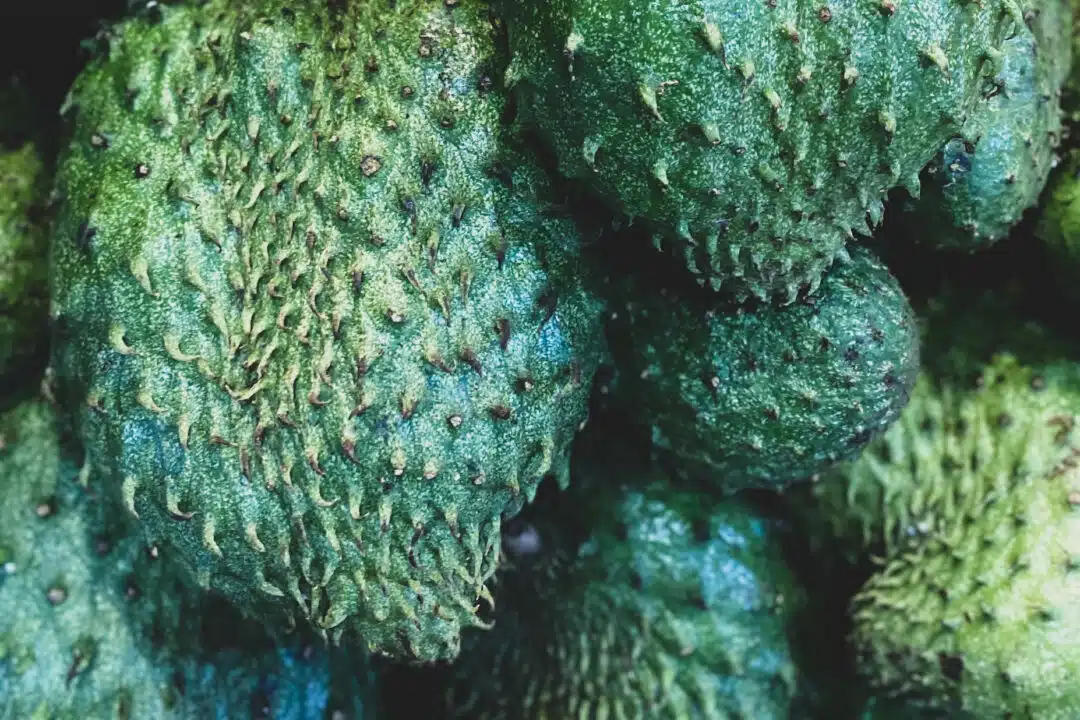
Annona muricata, also known as soursop, guyabano and graviola. It’s a fruit with creamy white flesh and a mildly sweet taste. In the Dominican Republic, it is often blended into a refreshing beverage called champola. It is available year-round and is said to possess medicinal properties.
This species is related to the fruit known as chirimoya or cherimoya (custard apple), which belongs to the Annonaceae family. Guanabana is a multi-monikered fruit, with other names including soursop, cherimoya, custard apple, Brazilian paw paw and graviola.
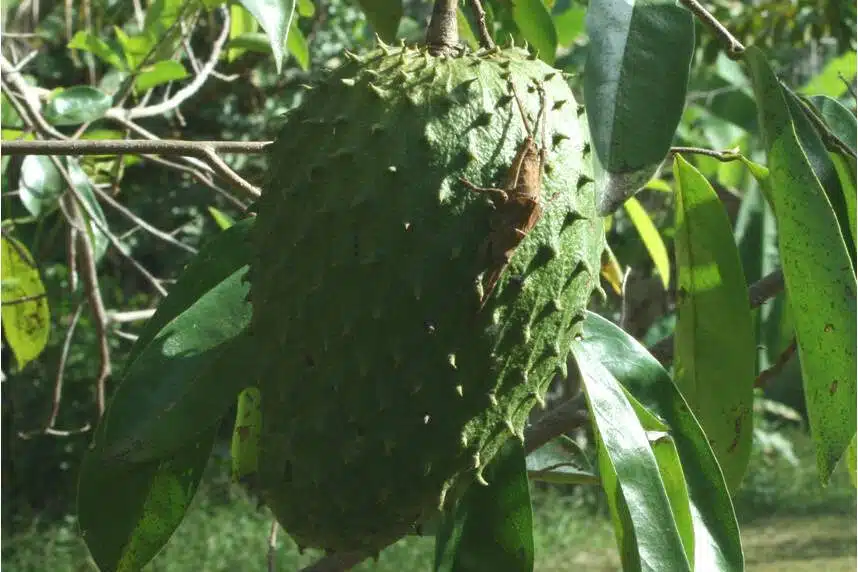
People in South America and Southeast Asia have used it for countless years to treat health problems like heart disease, asthma, liver issues, and arthritis.
Evidence indicates that its various parts – bark, leaves, root, seeds, and fruit – are beneficial in treating these ailments.
Cherimola
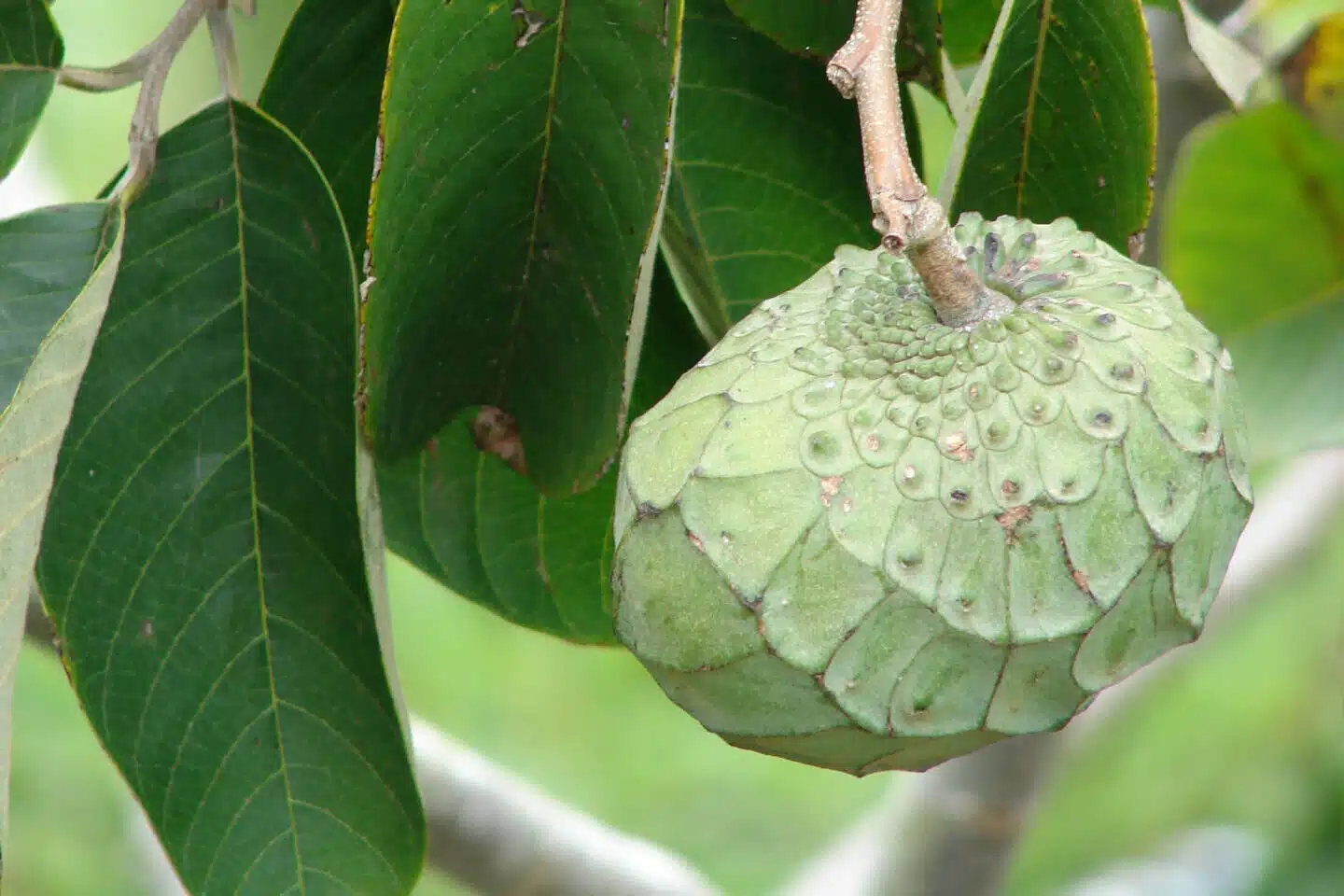
Cherimoya, also known as “Fruit-cone” or custard apple, is a heart-shaped, green fruit native to South America. It has an inedible, scaly peel similar to an artichoke and a soft, creamy flesh like custard inside. The white, sweet pulp has a taste similar to vanilla yogurt or custard and it contains a variety of vitamins and minerals. In some places, the cherimoya pulp is used to make sorbet or ice cream.
Cherimoya also has many health benefits: it is high in antioxidants, lifts the mood and promotes eye health. It also prevents high blood pressure, aids digestion, and has anti-cancer properties. Children should know that the large black seeds are poisonous. You should not eat them, nor the skin. A fascinating fact about the cherimoya is that you can grow it at high altitudes.
Sapodilla
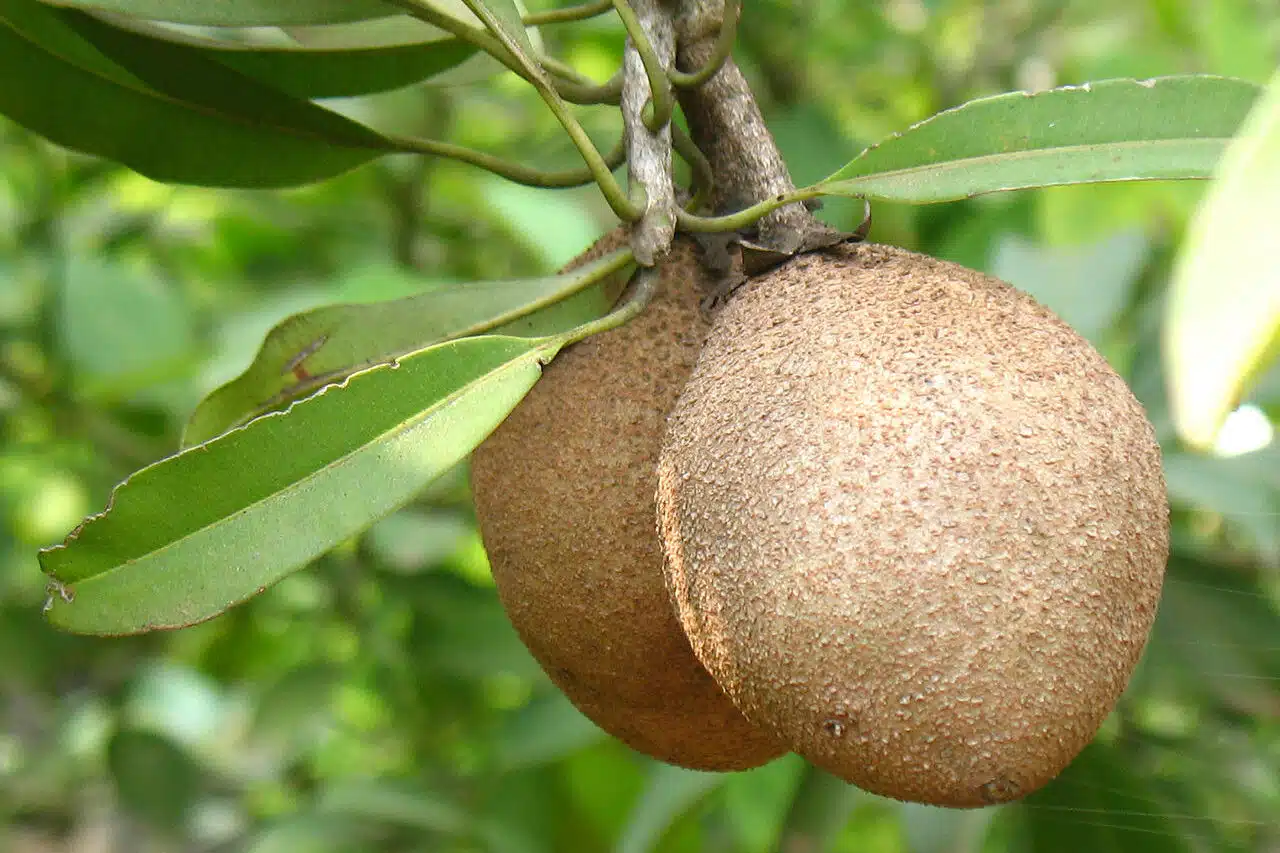
Manilkara zapota, commonly known as sapodilla, is an evergreen tree native to Mexico, the Caribbean, and Central America. It is now widely cultivated in many other parts of the world, including India.
The tree typically grows up to 30 metres in height and produces round or egg-shaped fruits. In North America, these fruits are called sapodilla, while in the British West Indies they are referred to as naseberry, in India as chicku, in Mexico as chickozapote, in the French West Indies as sapotillier, and in the Bahamas as dilly.
Sapodillas have a brown, rough exterior, usually measure 5-9 cm in diameter, and weigh between 75-200g. They have yellowish to light brown flesh which can be either soft or slightly gritty, depending on the variety. Sapodilla is a fruit that is not well-known in the United States, but it is quite popular in areas such as India, Thailand, and Mexico.
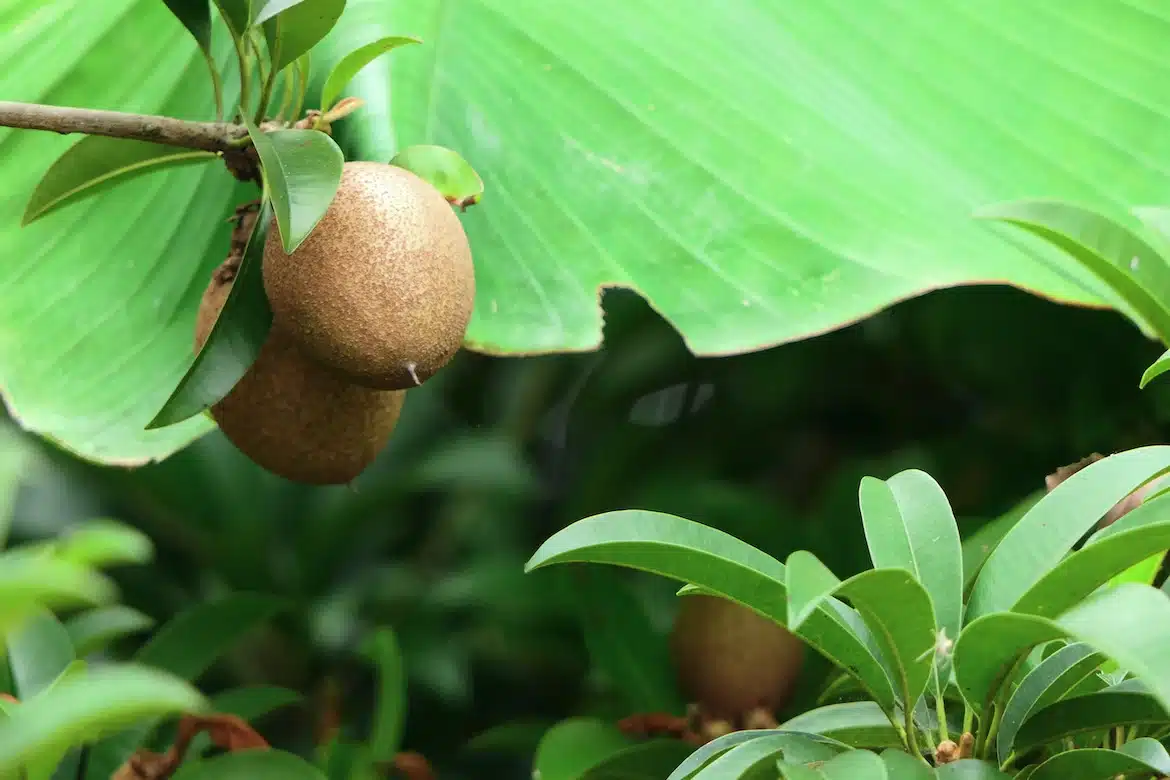
It is known to have numerous health benefits, including cleansing blood vessels, improving gastrointestinal tract functioning, and reducing sugar levels in people with diabetes.
Furthermore, it is said to have a unique taste, resembling a combination of plums, potatoes, pears, persimmons and quince.
Tamarind
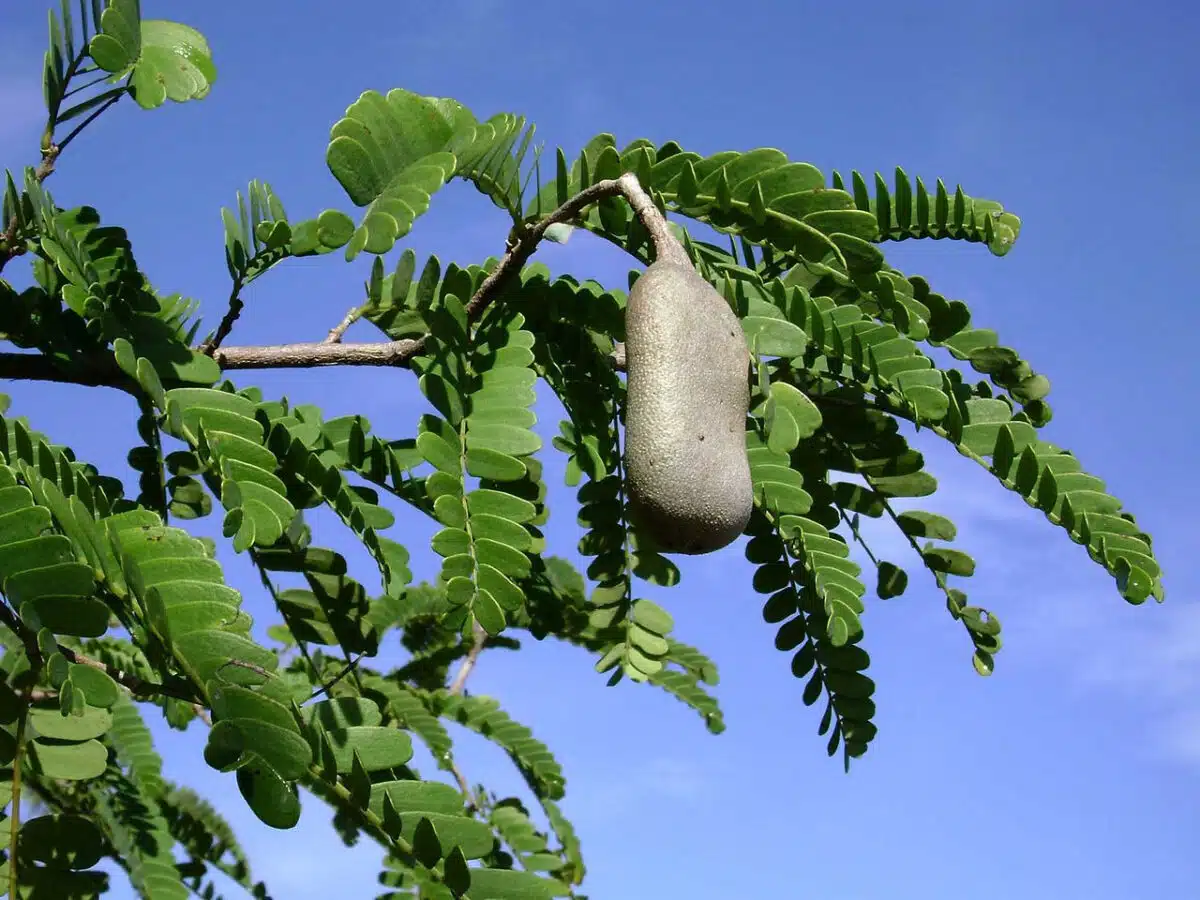
Another popular exotic fruit in the Dominican Republic is the tamarind. Tamarind, or Dominican date, is a bean with a curved brownish pod that is sour at first but sweetens as it ripens. It has long been believed to have aphrodisiac properties and can be eaten at any stage of maturity. Some fun facts about tamarind include that a tree can last up to 15 years and produce between 50-100 kg of fruit during its life.
This tart and tangy fruit is native to Africa, but has become a staple in the Dominican Republic. The fruit is often used to make a refreshing drink called tamarindo, which is enjoyed by people of all ages.
In some parts of Ghana, people use tamarind pulp as a pickling agent to render poisonous yams safe to eat. Tamarind fruit offers numerous health benefits, including being a rich source of antioxidants, potentially having anticancer properties, improving heart health and cholesterol, providing natural antimicrobial benefits, and potentially offering anti-diabetic effects.
Dragon Fruit
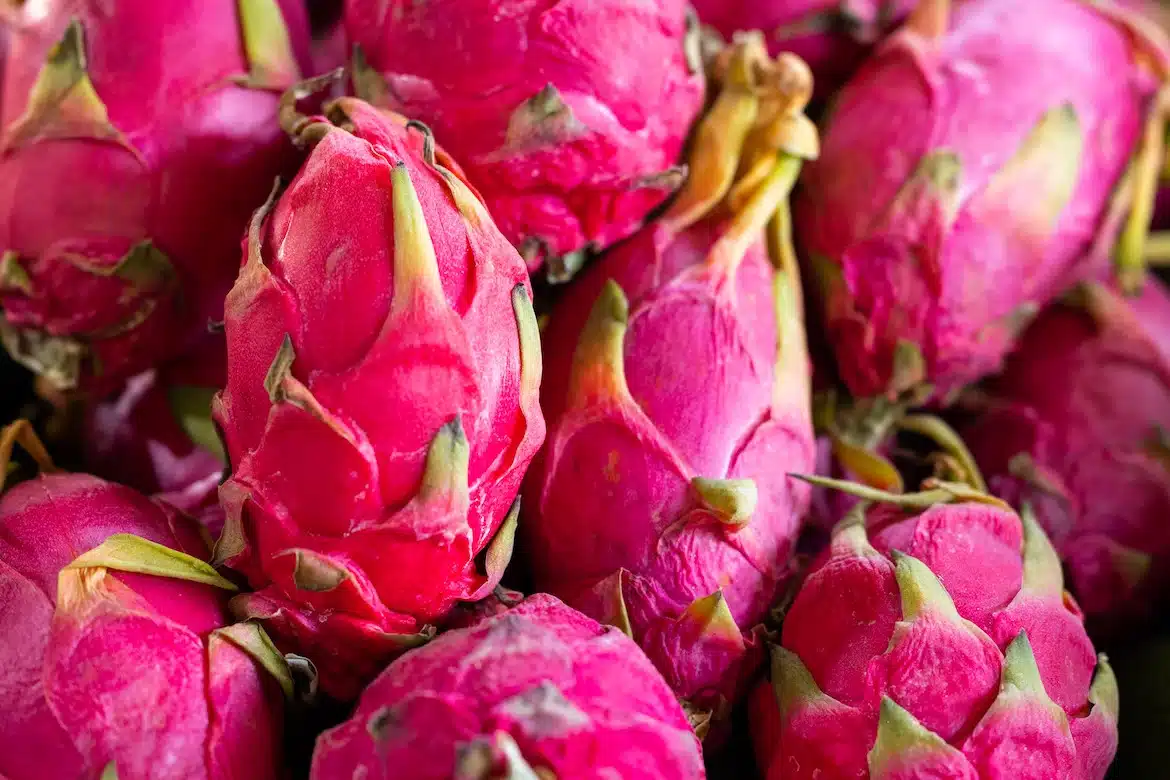
The dragon fruit, also known as pitahaya or pitaya, is an exotic fruit with a striking appearance. It is a member of the cactus family, primarily sourced from Central America and now cultivated in other regions such as China, Vietnam, South America and Israel.
Measuring around 10 cm in length, the dragon fruit has a hard exterior with spiky scales, reminiscent of the mythical creature it is named after.
Inside, the fruit features sweet and sour flesh that people typically eat with a spoon. Not only is this fruit a delicious delicacy, but doctors also recommend it as a remedy for stomach pains and endocrine diseases. Here are five facts about the amazing dragon fruit.
Zapote
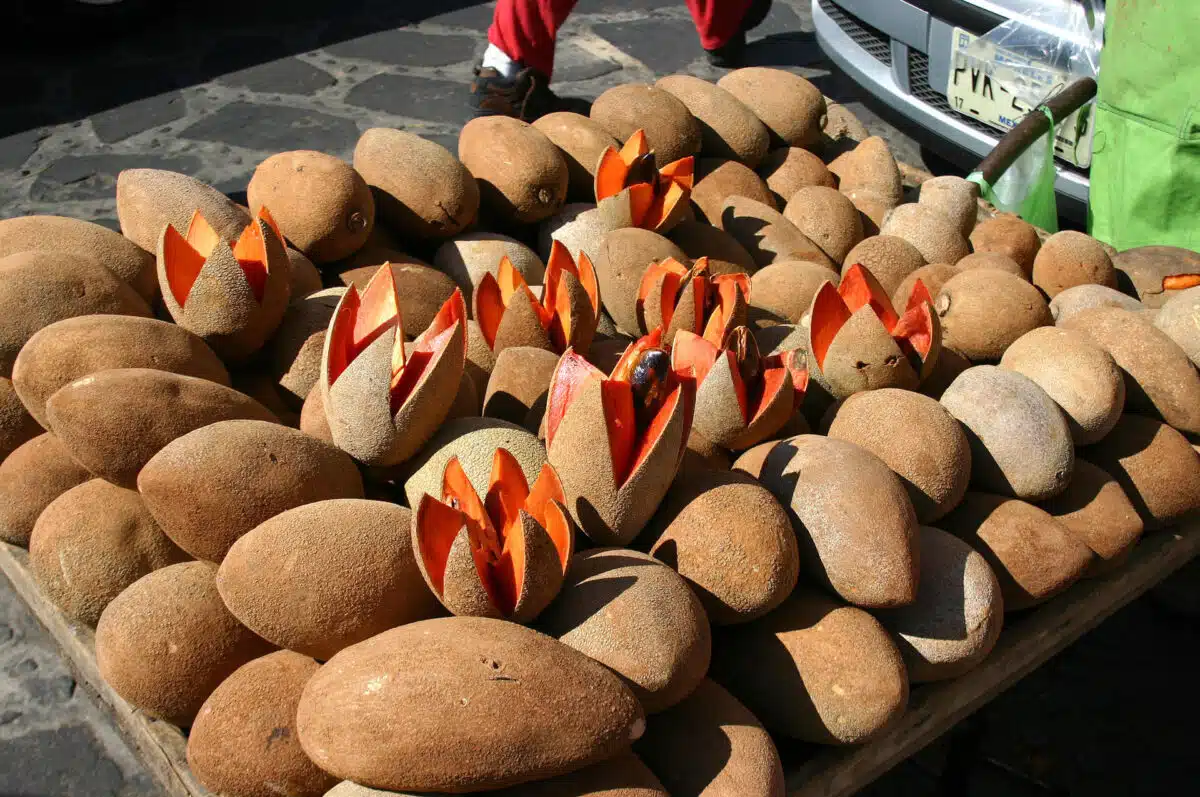
People with a sweet tooth who are looking for an alternative to chocolate, biscuits and other store-bought sweets will love the Zapote. The fruit consists of a deep reddish-pink flesh with a sugary taste and firm texture, despite being 85% water.
This fruit is also high in fiber and Vitamin C and contains two to five hard, inedible black seeds at its core. Its flesh is a deep orange color and can be somewhat stringy. When not ripe, the Zapote has a high amount of saponin, an astringent which causes the mouth to dry out. As the fruit ripens the Zapote becomes soft and emits a sweet aroma.
People most commonly eat Zapote fresh out of hand, and in Central America, they blend it with milk, sugar, water, or ice to make a refreshing drink. You can also mash it, use it in custards, blend it into smoothies, or freeze it for use in pies, crumbles, and ice cream.
Other Exotic Dominican Republic Fruits

The Dominican Republic is home to a variety of exotic fruits, some of which may be unfamiliar to many. Buen pan, a native Dominican variety, is a type of breadfruit that is both sweet and tart.
Coconut, or coco, is a common fruit in the Dominican Republic. Oranges, known locally as china, are also a popular fruit. Guineo, or banana, is a major staple in the Dominican Republic. Sea grapes, or uva de mar, is a unique fruit native to the Dominican Republic which is often used to make jams and jellies.
The Noni fruit, or chacón, is a popular fruit that is known for its medicinal properties. Limoncillo, or limoncillo, is a small citrus fruit that is often used to flavor drinks and dishes. Lechosa, or papaya, is a tropical fruit that is widely available in the Dominican Republic.
Manzana de agua, or Malay apple, is a sweet, crisp fruit native to the Dominican Republic. Manzana de oro, or ambarella, is a tart, green fruit with a sweet taste. Naranja agria, or Seville orange, is a tart citrus fruit that is often used to make marmalade.
These exotic fruits of the Dominican Republic offer a unique and delicious taste to those who are willing to try something new. The sweet, tart, and savory flavors of these fruits can be enjoyed in a variety of dishes and drinks.
Many of these fruits are used to make jams and jellies, or to add a unique flavor to dishes. Whether you are looking to explore a new flavor or just want to enjoy the taste of something sweet, these exotic fruits are sure to please.
Summary – Fruits from Dominican Republic
With its unique and exotic fruits, the Dominican Republic is the perfect destination for a tropical getaway. Whether you’re looking to sample some of the local cuisine, or just want to relax on the beach, the Dominican Republic has something to offer everyone.
In conclusion, the Dominican Republic is a fruit lover’s paradise. With a wide variety of exotic fruits available all year round. From sweet and juicy mangoes to tangy and refreshing tamarinds, there is something for everyone in this tropical paradise.
Thank your for reading the Fruits from Dominican Republic! You can find more articles here: Fruits from Honduras or our Domican Republic blog!
- National Parks in Montana: A Traveler’s Paradise - June 2, 2024
- National Parks in Arizona: Discover the Wonders - June 2, 2024
- Yucatan National Parks - June 2, 2024

